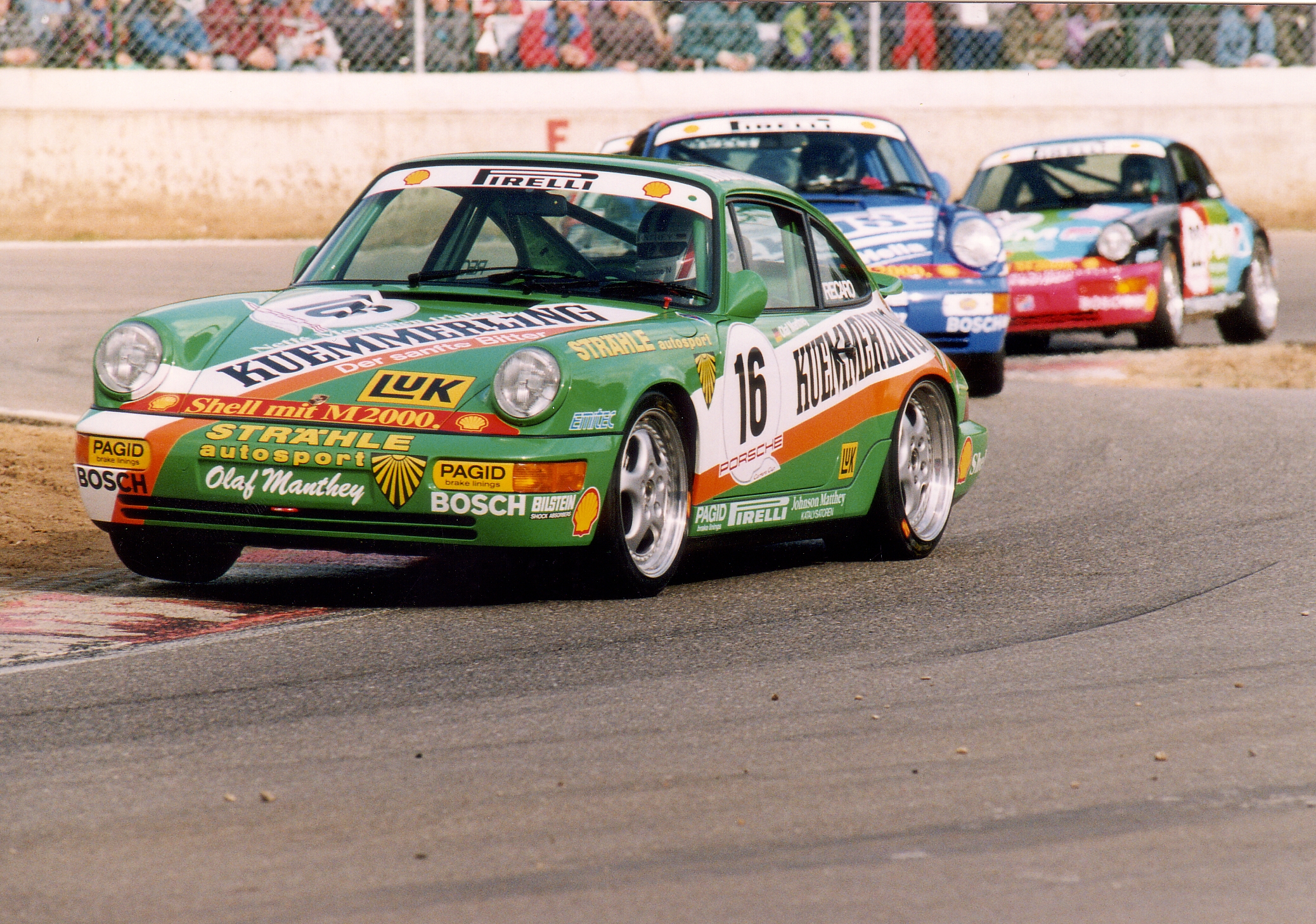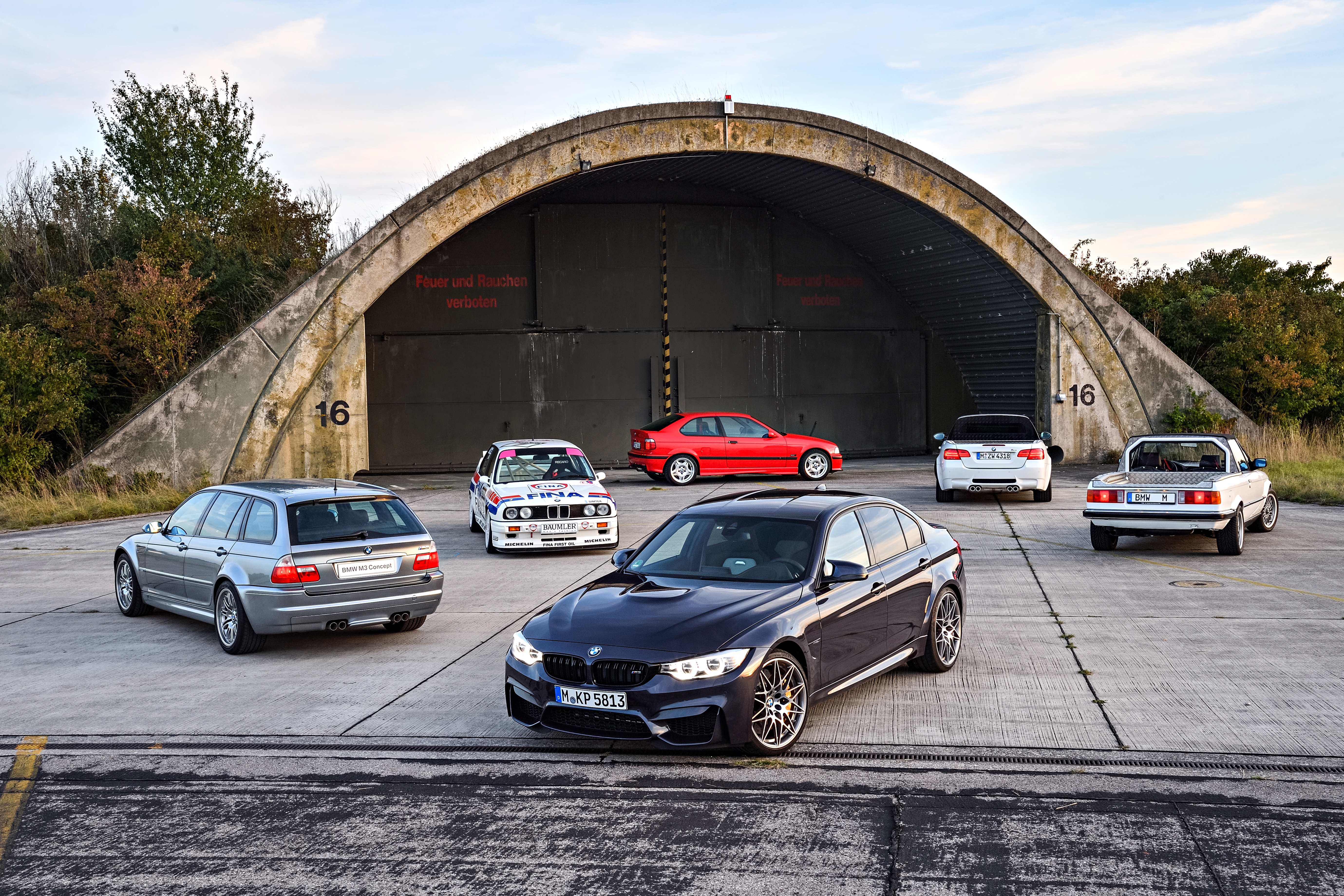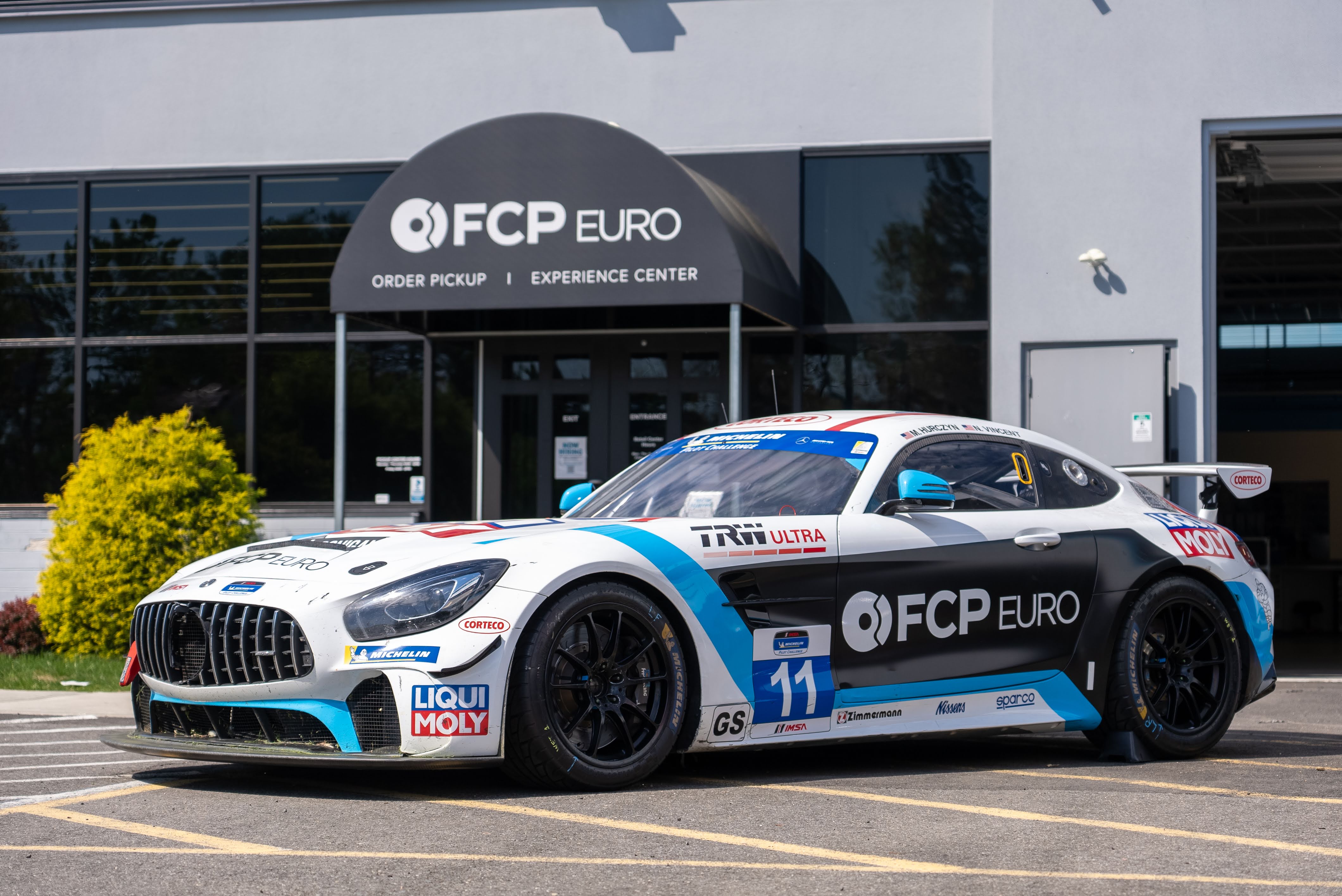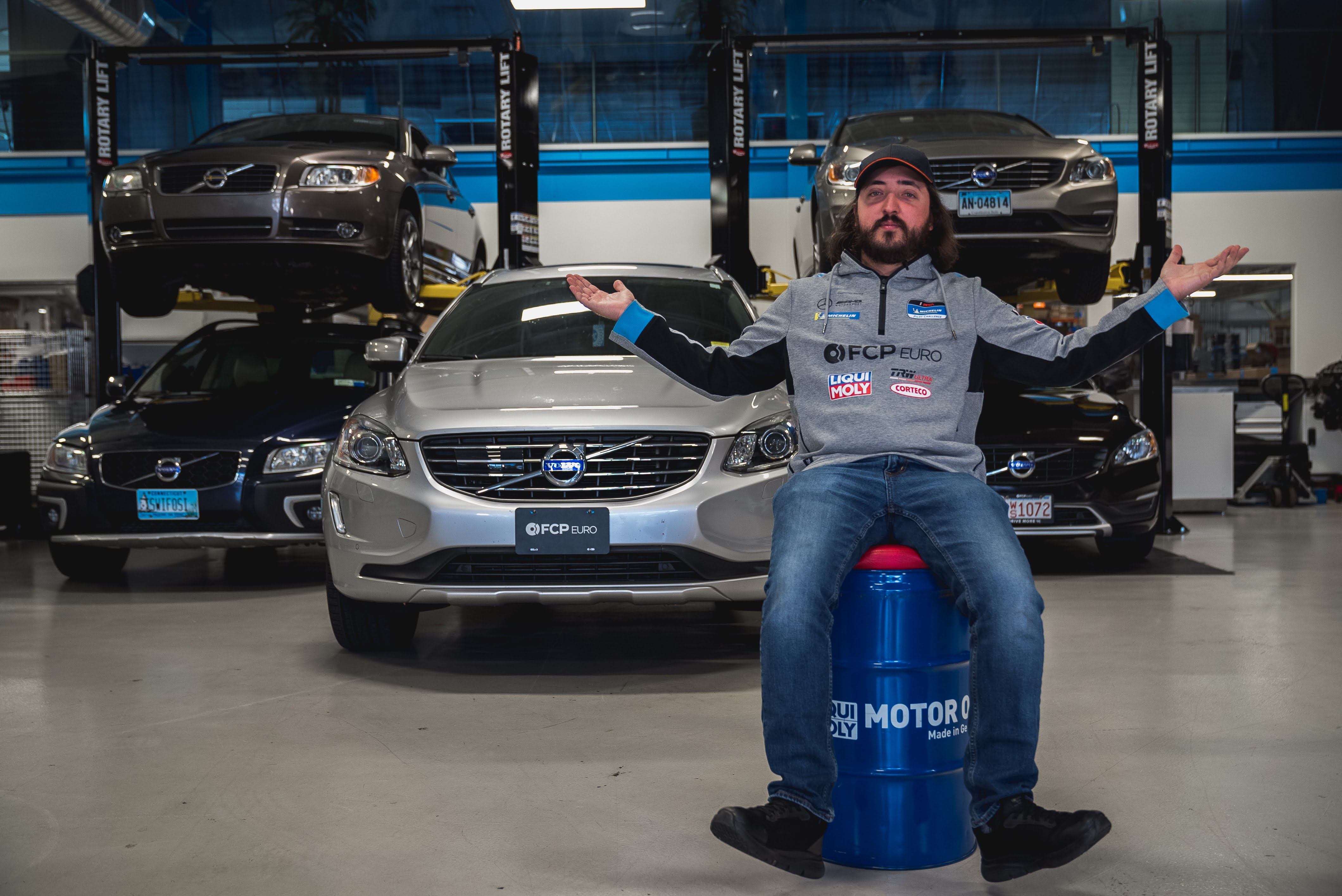- 01/21/2022
- 10 Min Read
- By: Christian Schaefer
European Automotive Acronym Basics: What They Are & What They Do
Cars are complicated, and anyone can see that. Millions of hours of research and development go into the systems that fill each model with its functionality and characteristics. However, those systems often have long and complex names, likely written in German. Abbreviating the names into different acronyms does make it easier for people to remember and understand those systems, but only after they're understood. We wouldn’t be shocked if you looked at this list and didn't know what some of them mean. We’re here to lay them out and break them down so you won’t ever get caught up on them again.
European Brands: |
Porsche

Porsche loves their acronyms. Just about every system has at least one, and though there are many to remember, they’re actually very straightforward. Each starts with “P,” and that stands for Porsche. Every other letter refers to the system at hand. Most often, you’ll see these acronyms pop up on build sheets, for sale ads, and on forums where owners discuss how different options affect their cars. A vast majority of these apply to the entire range of Porsche products, though some of the technical details may differ between models.
PASM - Porsche Active Suspension Management
Debuting on the 997.1 Carrera S and standard on all S and Turbo models was the Porsche Active Suspension Management, or PASM. Through special dampers and several electronic components attached to them, the PASM suspension can alter its firmness depending on the setting chosen by the driver and the conditions of the road ahead. The PASM dampers (shock/struts) have an electronically controlled valve inside them that’s controlled by a computer and various sensors. The valve controls the flow of fluid inside the damper, which then determines how harshly the car rides.
PDCC - Porsche Dynamic Chassis Control
PDCC, or Porsche Dynamic Chassis Control, is Porsche’s designation for its active roll stabilization. PDCC fitted to a 911 uses hydraulically-controlled endlinks that can apply more or less force to the sway bar depending on what the suspension-monitoring sensors read. The PDCC system reduces body roll and helps improve lap times and safety by keeping the car more composed through corners. On the Cayenne, the PDCC system uses a sway bar with an electromechanical actuator placed in its center. Depending on the situation, a control unit commands the actuator to provide more or less roll control.
PDLS & PDLS+ - Porsche Dynamic Lighting System
PDLS stands for Porsche Dynamic Lighting System. Vehicles equipped with those headlights have main beams that turn with the steering wheel for better visibility around corners. The PDLS headlights are either Xenon or LED units, depending on the year and model. The Turbo and GTS-badged models are fitted with them as standard, while it’s optional on all others. PDLS+ could be fitted over the standard PDLS system for a bit more money. The Plus headlights on the newest generation of Porsches use an “LED Matrix” that regulates the intensity and direction of the main beam based on traffic surroundings for maximum visibility in all situations.
PCCB - Porsche Carbon Ceramic Brakes
Porsche Carbon Ceramic Brakes are easily identified by their bright yellow brake calipers and dark grey brake rotors. Porsche’s lightweight and high-performance brake system comes standard on the Turbo S and some GT cars. The brake rotors are made from a carbon-fiber-reinforced ceramic core covered with an additional ceramic layer. Their carbon-ceramic construction allows them to withstand race track abuse for far longer than any steel disc while being half the weight of a conventional steel rotor. The only downside is cost—the PCCB option is around $8000, and the replacement rotors are over $5000 apiece.
PSCB - Porsche Surface Coated Brakes
PSCB or Porsche Surface Coated Brakes are a relatively new technology for Porsche. Owners of all vehicles have complained about ugly, rusted rotors and excessive brake dust for more than a few decades. The PSCB brakes were designed to do away with that. The exclusive white caliper clamps down on tungsten-carbide-coated rotors. The tungsten-carbide coating is tough enough to cut diamond, so it is very resistant to wear. Special pads are also used in what Porsche calls a dust-free and rust-free brake system that combines the qualities of the PCCBs with the lower cost of standard steel rotors. Tests have shown that they stop hard and quick and don’t rust. However, they do produce a very fine amount of dust, so they aren’t exactly dust-free.
PTM - Porsche Traction Management
Porsche Traction Management is Porsche’s signaled switch from a viscous-coupling all-wheel-drive system to an electronically controlled system. PTM was first fitted to the Cayenne before finding the 997 Turbo and 997.2 Carreras. The system uses electronically controlled differentials to distribute power to the axle determined to be slipping. It has evolved several times since its debut and will continue to as Porsche further develops it.
PTV & PTV Plus - Porsche Torque Vectoring
PTV, or Porsche Torque Vectoring, is Porsche’s system for overcoming understeer. The PTV system is for models equipped with a manual transmission. Using wheel speed and a yaw sensor, the PTV controllers will clamp down on the inside rear wheel to produce the extra rotation required to mitigate understeering in a tight corner. PTV Plus is for PDK-equipped models and uses the electronically controlled rear differential to split power between the rear wheels and send it to where it’s most needed. Working together with the PTV braking, the Plus can nearly eliminate understeer in any situation.
PSE - Porsche Sports Exhaust
Optional on just about every sports car Porsche makes is their Porsche Sports Exhaust, or PSE. It is a higher flowing and slightly louder exhaust. Then, at the push of a button, the driver can open a valve in the exhaust to bypass some of the muffling for more noise and performance.
PSM - Porsche Stability Management
Traction control goes by many names, as does stability control and automatic brake differential, so Porsche grouped them all together and put them under Porsche Stability Management, or PSM. The whole system uses a myriad of sensors like wheel speed, yaw, pitch, roll, and throttle to read the car’s dynamics. If any wheel slips, understeers, or oversteers, the various sensors trigger the PSM computer to activate one of many measures to settle the car.
CIS (Bosch K-Jetronic) - Constant Injection System
Porsche started their switch from carburetors and mechanical fuel injection in 1973 when the last half of the 911T models received Bosch K-Jetronic electronic fuel injection. This system is almost universally referred to as CIS or Constant Injection System. That’s because its injectors don’t fire in pulses but are constantly spraying fuel into the intake ports. It evolved a few times before being replaced by the Bosch Motronic system in 1984.
BMW

BMW itself is an acronym for Bavarian Motoren Werke or Bavarian Motor Works. The company from Munich loves their acronyms just as much as the rest, though they don’t put their name in front of each one.
PDC - Park Distance Control
PDC stands for Park Distance Control. The PDC system extends as far back as the mid-nineties E38 7-series. In its most basic state, PDC is a series of parking sensors fitted to the vehicle’s bumpers to alert the driver of nearby hazards while parking. Later, cars use cameras and graphics to further inform the driver while still under the PDC designation.
CS
CS has a long history with BMW and now has two separate meanings. Its original meaning when used on the E9 chassis of the late sixties and early seventies was Coupe and Sport. BMW’s modern M cars also wear the CS badge, but it is now meant to stand for Competition and Sport, denoting the evolution of the Competition Package cars from their standard siblings.
CSL - Coupe, Sport, Lightweight
The original CS meaning might have changed, but CSL hasn’t. CSL stands for Coupe, Sport, and Leichtbau, or lightweight in German. The two models to wear the badge were lighter, stiffer, and faster than their non-CSL siblings. The first model to wear the badge was the 3.0 CSL, built between 1972 and 1975. It featured aluminum doors, trunk lid, and hood, while sheet metal in the roof and wheel housings were thinned to reduce weight. The E9 also featured a slightly wider body and aerodynamic aids, lending to its “Batmobile” nickname. The other was the E46 M3 CSL. It didn’t gain a nickname but featured a lighter weight thanks to exotic materials like the preceding E9.
DCT - Dual-Clutch Transmission
Fitted to a majority of BMW’s M cars and other performance models is their DCT or dual-clutch transmission. The DCT was their fastest-shifting and most motorsports-oriented gearbox, handling all of the power an M car could throw at it. Like other dual-clutch transmissions, it was easy and friendly on the street like an automatic but aggressive and fast when spirited driving was called for. However, much to the chagrin of M owners, BMW has begun phasing out the DCT for the ZF 8-speed automatic transmission, even for its M cars.
DSC - Dynamic Stability Control
BMW has a very similar system to Porsche’s PSM, called DSC, or Dynamic Stability Control. It encompasses all of their traction aiding systems, ABS, Cornering Brake Control, and Automatic Stability Control, into one complete system to eliminate any chance of over or understeer. The DSC uses vehicle speed and engine speed, throttle position, brake pedal position/force, and the steering angle sensor to read the driver’s inputs and watch the vehicle's reaction. It then determines if any input is needed and applies it where necessary.
DDC - Dynamic Damper Control
The Dynamic Damper Control system is the term for BMW’s adjustable damper option. Like PASM, DDC uses shocks and struts fitted with a valve controlled by a central control unit. That control unit makes use of various sensors to understand how the vehicle is behaving so it can adjust the valving of the dampers accordingly. The DDC is a highly regarded option among many owners and has proven to be a real performance improvement over the standard dampers.
ACC/DCC - Active/Dynamic Cruise Control
ACC and DCC are Active and Dynamic Cruise Control. The latter is your standard cruise control with the ability to use the brakes to hold speed downhill or reduce the programmed speed. Active Cruise Control uses radar to set a specific distance to the car ahead, so you never get too close. Once the specified range is hit, the BMW will use the radar and brake system to maintain that distance.
SMG - Sequential Manual Gearbox
The SMG gearbox is the famous or infamous unit, depending on how you view it, that was installed in the E39, E46, and E60/1/3/4. The Sequential Manual Gearbox was a different approach to the paddle-shift gearboxes that began to see use in street cars after their performance in Formula 1. BMW took their Getrag-built six-speed manual and fitted an electro-hydraulically activated clutch that would automatically dial in the slip needed to get the car rolling from a stop. At the press of a paddle, the SMG controller would open the clutch and shift gears before releasing the clutch. SMGs get expensive when the electro-hydraulic clutch system components begin to break.
VANOS - Variable Nockenwellensteuerung
Ah yes, Variable Nockenwellensteuerung, of course! VANOS is the term for their variable camshaft timing system and is a shortened initialism taken directly from the German phrase for variable camshaft timing. VANOS began service in the mid-nineties and is now a staple in all of BMW’s engines. Depending on the year, you’ll hear or read about double or single VANOS, and that refers to how many of the camshafts feature variable timing. The single VANOS system exclusively provides variable timing to the intake camshaft, while the double system is both intake and exhaust camshafts.
RDC - Reifendruckkontrolle
The RDC is BMW’s tire pressure monitoring system. It is derived from Reifendruckkontrolle and breaks down into Riefen (Tire), Druck (Pressure), and Kontrolle (Control). The RDC system uses a sensor mounted on the inside of each wheel to measure and communicate the tire’s air pressure to the vehicle computers. From there, the computer can display the current pressures and alert the driver when one or more drop to near empty.
FRM - Footwell Module
If you’re familiar with the E9X and E8X chassis, then you’re likely familiar with the FRM module. Referred to as the FRM or footwell module, this box of electronics handles the door controls, locking mechanisms, and lighting from more than a handful of internal systems. Located down in the driver’s footwell, they’re known to fry quite easily from water exposure, causing havoc with different systems across the car.
CCC/CIC/NBT - BMW iDrive
BMW’s iDrive system has been in use for nearly twenty years now and has gone through a few revisions over that time. The three initialisms above represent the first three generations of iDrive and how many owners and enthusiasts refer to them. The earliest is the CCC or Car Communication Computer. It was seen earliest in 2003 and was last used in the E70 X5. The CIC, or Car Information Computer, was a big setup in technology but was replaced much quicker than the CCC. Its service began in 2008 and ran till 2013, appearing in many E8X and E9X models. The NBT, or Next Big Thing, replaced the CIC. The NBT series received two major updates and was reclassified as the NBT Evo ID4 and NBT Evo ID5/ID6. That series ran until 2018, when it was replaced by the MGU or Media Graphic Unit.
MPK - M Performance Kit
MPK stands for M Performance Kit. For the last decade or so, BMW has begun offering different performance-based kits for non-M models. These include the MPBK (M Performance Brake Kit) and the MPPK (M Performance Power Kit).
LSZ - Lichtshalterzentrum
Also known as the LCM, it stands for lamp switch center or light control module. The LSZ is one of two gateway modules in the E46 and contains the vehicle’s VIN, mileage, and vehicle order configuration. If the LSZ and the other gateway module don’t have matching data, the vehicle’s tamper light will illuminate in the cluster. Replacing an LSZ requires recoding it to the recipient’s data.
DISA Valve - Differenzierte Sauganlage
The DISA Valve, a thorn in the side of many BMW owners, is responsible for actuating the flaps inside the M5X engine’s intake manifolds. The initialism DISA comes from the first two letters of Differenzierte and Sauganlage. The direct translation is “differential air intake.”
Mercedes-Benz

The original company from Stuttgart and Porsche’s neighbor, Mercedes, is no stranger to an initialism or two. The company's vocabulary doesn’t contain too many confusing letter combinations, but you should know a handful of important ones.
ABC - Active Body Control
Active Body Control, or ABC, has been in use for over twenty years. It’s a hydropneumatic suspension system first applied on the W220 and C215-platform S-Class and CL-Class, offering increased road handling capability as well as finite ride firmness adjustment. It features coil springs with active dampers controlled by the ABC computer. The computer reads the road conditions through various sensors in the suspension and uses hydraulic pressure to firm up or soften the suspension at a particular corner. When it’s in Sport, the ABC increases pressure to the outside suspension and eliminates all visible signs of body roll. In comfort, the ABC softens everything, allowing for that classic Mercedes ride.
SBC - Sensotronic Brake Control
Mercedes has been the progenitor of many great technological advancements over the past few decades, but the Sensotronic Brake Control, or SBC, was not one of them. It eliminated the mechanical link for a brake-by-wire setup. As the driver applied the brakes, the SBC would use pressure sensors, a yaw rate sensor, and wheel speed sensors to determine the individual pressure each wheel would benefit from most. It would then distribute that based on the pressure required by each wheel. It was first introduced on the 2003 W211-Class as well as the SL-Class and saw two widespread recalls before being shelved for the higher-production E-Class and CLS-Class, continuing production on the R230 platform to its production end in 2012. All models with the SBC carry a 25-year, unlimited mileage warranty for their components as they’re known to fail so regularly.
ASD - Anti-Slip Differential
The Anti-Slip Differential was fitted to W124 models as well as the W201 190E 16V in the late ‘80s. The differential is electro-hydraulically controlled and locks up when one wheel speed sensor detects slip. The system exclusively uses ZH-M-type fluid.
ASR - Anti-Slip Regulation
ASR stands for Anti-Slip Regulation, as is the initialism for Mercedes’ comprehensive traction control system. The ASR uses a central computer that communicates with the electronic throttle body, wheel speed sensors, and the rear brakes. When slip is detected, the computer either shuts the throttle slightly to reduce engine power or brakes the slipping rear wheel. Both methods are used together in extreme situations.
Audi/VW

Audi and Volkswagen are so closely related that it made sense to include them together here. For the last quarter-century, many of these badges have adorned the engines and bodywork of Audi/VWs, covering their most family-oriented models to those designed to set fast lap times.
TFSI - Turbo Fuel Stratified Injection
Turbo Fuel Stratified Injection is the breakdown of TFSI. It refers to the technology equipped to the engine, whether the EA888 or EA113, that handles the fuel and air mixture in the combustion chamber. It’s meant to deliver a rich mixture near the spark plug that then gets leaner as it moves away, allowing for a leaner and more efficient fuel burn. TFSI is almost exclusively used on Audi models.
TSI - Turbo Stratified Injection
Turbo Stratified Injection is what TSI stands for. Sounds similar to TFSI? That’s because it is. It’s essentially the same exact system as the TFSI but with a slightly shorter name. Both use direct fuel injection to produce a stratified charge in the combustion chamber for better fuel economy and lower emissions. The TSI badge can be found on the EA888 and EA113.
FSI - Fuel Stratified Injection
Fuel Stratified Injection is the first of VW/Audi’s stratified injection systems. The general injection setup remained the same during the update from FSI to TSI, with the main differences being the surrounding components. FSI engines use timing belts, whereas the TSI and TFSI engines use timing chains. They also use different engine management computers, have different compression ratios, and use different PCV systems.
TDI - Turbocharged Direct Injection
The TDI badge first appeared in the late ‘80s on an Audi. Since then, all of VW/Audi’s turbocharged diesel-powered models have worn the TDI nomenclature. Broken down, it stands for Turbo Direct Injection. The TDI badge was known for reliable and economical engines until the large emissions scandal that hit VW just a few years ago.
DSG - Direkt-Schalt Getriebe
Direct-Shift Gearbox, or Direkt-Schalt Getriebe, is what Volkswagen/Audi calls their dual-clutch transmission. It debuted on the 2004 Audi TT 3.2 Quattro before making its way into just about every car in both companies. Dual-clutch transmissions have become the go-to in performance applications, making used GTIs incredible performance value for money. If you’d like to know everything there is about the DSG, you can read all about it here!
VAQ - Vorderachsquersperre
Vorderachsquersperre, or Transversal Front Axle Locking, better known as the VAQ, is Volkswagen’s term for its electronic limited-slip differential. It’s a very clever system unlike anything else in production today.
VAG-COM/VCDS
These terms get thrown around a lot on message boards and Facebook groups but for a good reason. VAG-COM is the interface used to access the VCDS (VAG-COM Diagnostic Software) that interacts with the Volkswagen and Audi electronics. Engine mapping, code reading, data logging, and more are all possible with the software developed by Ross-Tech. Anyone who intends to own, service, or modify a VW/Audi should become familiar with this software.
Volvo

The Swedes are no strangers to acronyms and may just come up with some of the easiest to remember. Unlike most automakers, Volvo made actual acronyms out of their systems rather than initialisms, so they formed actual words.
SIPS - Side Impact Protection System
SIPS is the acronym for Volvo’s Side Impact Protection System. Always looking for a way to be safer, Volvo began experimenting with new technology and energy dispersion techniques in the late eighties. It was then that they developed their SIPS and have fitted it to every car since, upgrading it along the way. Initial protection upgrades came from reinforced sills, pillars, and energy-absorbing honeycomb in the doors. That has since evolved into curtain and seat airbags designed to keep the structure away from the occupants.
BLIS - Blind Spot Information System
Another safety system from Volvo, BLIS, is the Blind Spot Information System. The BLIS uses proximity sensors, similar to the parking sensors, to warn the driver of any vehicles quickly approaching or sitting in their blind spot. The sensors send a signal to a central computer which then illuminates a light on the mirror glass or housing to alert the driver of the other vehicle’s presence.
WHIPS - Whiplash Protection System
Launched in 1999 was the Whiplash Protection System or WHIPS. Upon an impact from the rear, the seatback shifts into a different position, repositioning the body in a way that reduces the chance of harm. Volvo themselves describe it like the seat is a glove that is catching a ball. The seatback partially relaxes and lays back, changing the angle of effect that the impact force has on one’s head and neck.
VIDA - Volvo Information & Diagnostics Aftersales
VIDA, or Volvo Information & Diagnostics Aftersales, is the diagnostic, programming, and repair software for all Volvos. It’s similar to VW’s VAG-COM/VCDS software and essentially provides the same function. If you plan to service or modify the Volvo in the future, you’ll want to have VIDA at your disposal. It’ll allow you to read and scan codes, reprogram modules and provide over twenty years’ worth of wiring schematics to many Volvo models.
There are tons of initialisms and acronyms created by European manufacturers, and we likely didn't get them all. If there is a manufacturer-specific acronym left out from the list, please let us know in the comments! We'll add it to the continually growing list to help as many people as we can. As always, subscribe to our YouTube channel and follow along on the DIY Blog for more daily content!











